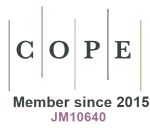Downloads
How to Cite
Ankarklev, J., Hjelmqvist, D., & Mantel, P.-Y. (2014). Uncovering the Role of Erythrocyte-Derived Extracellular Vesicles in Malaria: From Immune Regulation to Cell Communication. Journal of Circulating Biomarkers, 3(1). https://doi.org/10.33393/jcb.2014.2042
Issue
Section
Original research article
Statistics
- Abstract views - 805 times
- PDF downloads - 355 times
Sign up
banners150
Most popular articles in the last 30 days
-
206
-
160
-
157
-
152
-
97









